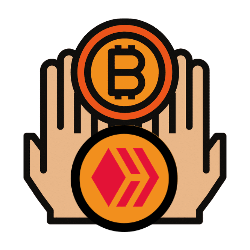
ChainLink technology aims to solve one of the biggest challenges for practical smart contract implementation, namely connecting blockchains to real-world data, such as pricing feeds or delivery confirmations, using Blockchain Oracle connectivity. From a series of cryptocurrencies with potential, today I'll try to tell you what I know about ChainLink.
ChainLink is a decentralized network of "oracles". External data providers who share the work on the network are called duplicated "oracles". These oracles allow smart contracts on ChainLink to receive accurate data from external (non-Blockchain) sources, such as any kind of API and other external data feeds. LINK is an ERC-20 token that is used to pay for and ensure the correctness of this oracle service on the ChainLink network.
ChainLink allows access to real-time data, events, and payments, and all of this happens without sacrificing the security and trust that are essential to Blockchain technology.
Since 2017, when this cryptocurrency was created, ChainLink has so far succeeded in fulfilling its purpose of providing accurate external data to Blockchains. Even though it originated from Ethereum (ETH), ChainLink was designed to work on any Blockchain that has smart contract functionality. ChainLink does not operate its own Blockchain - instead, it is interoperable and runs simultaneously on several different Blockchains.

ChainLink uses a modern three-step process to enable communication between the Blockchain-based smart contracts it serves and external data sources. The process consists of:
A ChainLink user creates a Service Level Agreement (SLA) specifying a specific set of data requirements. ChainLink software then uses this SLA to match the user with the most appropriate oracle capable of providing the required data. Once the parameters are set, the user submits the SLA and submits their ChainLink cryptocurrency (LINK) into an order validation contract, which accepts bids from oracles.
This stage is where the oracle actually connects with external data sources to get the real-time data required in the ChainLink SLA. The data is then processed by the oracles and sent back to the contracts using a ChainLink service.
The final stage of the process is to calculate the results of the data collected by the oracles and return them to what is called the Aggregator Contract. The Aggregator Contract takes the data points, assesses the validity of each, and returns to the user (the smart contract) a weighted score using the sum of all the data received.

ChainLink is created by a Blockchain-focused technology startup called SmartContract. It was founded in 2014 and its main goal is to leverage Blockchain technology, especially smart contracts to enter into contractual agreements that can be used by all industry participants, regardless of expertise and skill. The company is backed by San Francisco-based investment group Data Collective.
Sergey Nazarov is CEO and co-founder of the company. Prior to SmartContract and Chainlink, Sergey had a history in the space as the co-founder of Secure Asset Exchange. He also founded a fully decentralized email service called CryptaMail.
Steve Ellis is CTO and co-founder of the company. Ellis has worked with Nazarov before, on the Secure Asset Exchange platform, before joining this company. He is also an experienced software engineer who worked at [Pivotal Labs](Pivotal Labs) before joining the Blockchain sector.
Another key founding member of the ChainLink team is Ari Juels, who, along with Nazarov and Ellis, wrote Chainlink's "white paper". A professor of computer science at Cornell Tech and director of IC3, Juels is currently an advisor to the ChainLink team.

The Chainlink project has many differences that make it unique:
- Architecture of ChainLink - The ChainLink network is part of this architecture, which connects all the nodes together. Each of these nodes is then connected to the pools via APIs to gather responses for each contract made through the ChainLink service.
- All off-chain data is translated through ChainLink Core software. Thus, they are read on-chain without the need for translation. The SLAs sub-signatures are also processed by this software, meaning that the entire operation has the ability to take place either on-chain or off-chain.
- ChainLink nodes - can have external adapters, helping to extend their connections to almost any third-party API endpoint.

HOW MANY CHAINLINK COINS (LINK) ARE IN CIRCULATION?
ChainLink has a maximum fund of 1 billion LINK tokens. 35% of the fund was sold during the ICO in 2017. The rest was either allocated to the team for future development or sent to network nodes to boost the decentralized oracle network. Currently, according to CoinMarketCap, the total number of LINK coins in circulation is about ~467,099,970(47%). Unlike many other crypto assets, LINK has no process that increases its total number of available tokens.

The Chainlink network is secured through a Proof of Stake (Pos) concept, where its validating nodes stake LINK to obtain data contracts and be rewarded by the network. Moreover, ChainLink's decentralized oracle network is secured by three types of custom-designed smart contracts:
Aggregator Contract: this collects data from oracles and matches the most appropriate results to the smart contract that needs them.
Order Matching Contract: these contracts match the best possible oracles to the service level agreement (SLA) of the smart contract they need.
Reputation Contract: verifies the integrity of an oracle by checking its statistics, including: total number of completed requirements, average response time, and sum of LINK tokens measured by the oracle.
LINK is the ERC-20 token used to pay for services in the ChainLink oracle network. It essentially powers the ChainLink architecture itself. Contract holders making the request use LINK to pay node operators for their work in providing the necessary data. Prices are set by the ChainLink node operator based on the demand for the data it can supply and the current market.
ChainLink's most developed functionality includes aggregated price feeds for cryptocurrencies and fiat currencies. To establish price feeds, ChainLink attracts external data providers, such as centralized and decentralized exchanges. ChainLink nodes then aggregate data from external providers to create a price update. Finally, this price-related data can be used by any smart contract with pre-established access. In this way, ChainLink can offer services to both data providers (who can sell their data) and data consumers, such as DeFi companies (who can use the data for smart contracts).

ChainLink Blockchain can support the secure sharing of inputs, outputs, and computations. Some features of ChainLink include:
- Supports decentralized data streams: data from multiple sources can be securely collected and processed for hybrid smart contracts.
- Provides verifiable random sources: applications such as games that require secure cryptographic randomization can use ChainLink.
- Enables automation: ChainLink smart contracts can automate key functions and event-driven tasks for enterprises.
- Supports Cross-Blockchain interoperability: ChainLink can connect Blockchain platforms to support the exchange of specific messages, tokens and actions.
ChainLink is solving a key problem in the cryptocurrency world, namely the "oracle problem". This comes from a problem of smart contracts on Blockchain networks and how they are completely isolated. Smart contracts frequently obtain external data from oracles, i.e. data points and APIs. ChainLink solved this problem when it was able to receive and distribute information from oracles without risking the security of the Blockchain on which the smart contracts run.
All images are sourced from the ChainLink's official brand-assets/media-kit and from Pixabay free to use.

The above screenshot is taken from @heartbeatonhive's Alive Tribe curation post which you can find here! Shout out to @bradleyarrow Thank you for your continuous support!

Come join me, it's free! If you register on ListNerds using my link, I'll do everything in my power to get you going WITHOUT the mistakes I made in the beginning. Let's earn and grow together faster than ever before!
This was also my first time using and including LeoGlossary in one of my articles. If you don't know about LeoGlossary just click here to have a look. Thank you @taskmaster4450 !
Posted Using LeoFinance Beta

 . Keep up the fantastic work
. Keep up the fantastic work